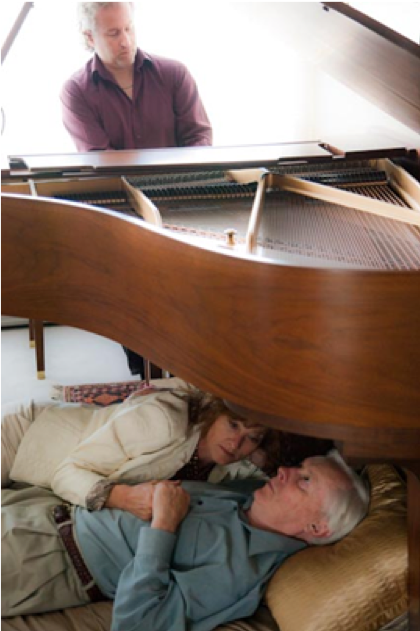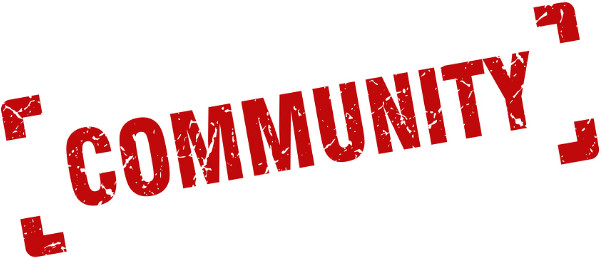Occasionally my wife coerces me into dropping by the grocery store on the way home from the office to “pick up a few things.”
On my latest sortie I encountered the most ingenious piece of marketing I’ve seen locally in quite a while …
Upon getting out of my truck and making my way across the parking lot, I am uplifted by the gentle scent of apple and cinnamon wafting into my nostrils. This is weird I’m thinking …
As I approach the store, I am greeted by a half-dozen smiling people.
Seated comfortably on bales of straw, the butcher and baker appear to be engaging customers in casual conversation. Everyone is sipping apple cider and clearly enjoying the ambiance of plump orange pumpkins plunked here and there among antique farm implements.
The sights and sounds and tastes are deliberately designed to evoke warm fall fair memories and the associated desire for pies and preserves and smoky bacon which just happen to be on sale inside the store.
My Marketing Mind Takes Due Note…
As I leave the store and pull out of the parking lot — pies, preserves, apple cider jugs and lazy maple bacon stowed safely in back, wallet substantially lightened — I flip on the radio just in time to take in yet a second marketing lesson.
 A musician in Vancouver Canada, Craig Addy, has found an ingenious new way to make money with of all things — a grand piano.
A musician in Vancouver Canada, Craig Addy, has found an ingenious new way to make money with of all things — a grand piano.
For a modest fee you get to crawl under Craig’s piano and cocoon yourself amid opulent gold and red silk pillows while he improvises in such a way as to suggest he may be reading your mind, body, and life.
Your presence under the piano inspires the music and the music inspires you … as you listen to never-before-heard chords and melodies with your face and your spine and the tips of your fingers.
As the lush waves of vibration wash over your entire body you become aware of a rich tapestry of emotion in yourself and in the music. It’s almost as if you and the quivering strings and the performer have become one in some strange otherworldly communion.
And I got to thinking: Somebody gets it, at least part of it.
I mean, neither of these offline businesses is exploiting their offerings to the fullest. But still, they have stumbled upon something profound.
They’re thriving by transforming their offerings into sensory-rich, emotion-evoking experiences. And the common thread that ran through both of their executions was the creation of a sense of connectedness — a human bond between buyers and sellers that seems so often lost in our hurried, harried, depersonalized world.
And I thought to myself, “Wow, isn’t that what people really want?”
Social Media Is Taking Over the Planet …

Like it or loathe it, many of your customers seem to be irresistibly drawn to social media. And trying to pretend it doesn’t exist is probably a pretty bad idea.
I don’t think that means diving headlong into every social media-maelstrom that comes along. But I do think it means you should be keeping a finger on the pulse of what’s driving it.
And what’s driving it?
I believe it’s this: Communications and computing technologies are eliminating the practical need for people to be physically together.
Instead of using trains, planes and automobiles to satisfy our needs in the flesh, we now have a virtual equivalent — the Internet. In the blink of an eye, we can be interacting with anyone, anywhere.
And that means we go out less. We shop from home … work from home … and increasingly, we socialize at home. Connectedness has never been easier.
But somehow, it’s just not the same as being together. People have never felt more alone.
Social media, I believe, is our practical attempt to recreate the togetherness lost.
Oh, how we crave the water cooler gossip and casual conversation that was a natural byproduct of getting out and around each day … working face-to-face and belly-to-belly with co-workers and customers … facing challenges and tragedies and overcoming them together.
Holed up in front of our computers, working away in isolation, like little mushrooms in the dark, we yearn to be entertained and recognized and appreciated. And most of all, we long for that sense of community and belonging we feel we’ve lost.
And what are these things at their essence?
They are experiences, aren’t they? Not physical ones like those I mention in this article, but nonetheless, experiences.
Creating Virtual Spaces Where People Can Bond With Each Other Around Common Interests Is the Online Marketing Wave of the Future …

And there are as many ways to do this as Carter has little liver pills.
You can turn the buying experience into an entertaining, shared adventure. You can create friendly competition to help your prospects and customers to pass the hours and inspire each other to greater achievement. You can provide a forum for communal nostalgia. You can sow the seeds of common rebellion.
And in the process, you are creating community and connectedness.
In the information marketing business, for example, one of the most profitable opportunities is the establishment of communities of interest where people can share their personal stories of transformation.
Storytelling is what brings people together. It always has — whether around the campfire, the water cooler, or online.
Once people start telling stories to one another, they naturally form a common culture. Stories unite. And as the nucleus of that unity, your business benefits from longer member retention, enthusiastic referrals, and soaring lifetime customer value.
By encouraging your best customers to share their transformational stories — thereby elevating them to hero status within the tribe — you are creating a powerful form of experiential marketing.
You go beyond selling mere information and instruction. And you become the nucleus of meaningful social contact and interaction.
“Membership” in your business becomes an entertaining social experience — something people can connect with and belong to and that makes them feel accepted, acknowledged and appreciated.
I’ve always encouraged my copywriting students to showcase the experiential aspects of the products and services they’re selling. Creating community and connectedness is an extension of that premise.
A feature is what your product is. An advantage is what it does for your prospect. And a benefit is a positive emotion it allows them to experience. The order matters.
Given the task of writing copy for a membership site for rock musicians, which sequence do you think sounds more appealing?
Benefit — “Come jam with us and lose yourself in the pounding rhythms and passionate riffs running rampant throughout our global community of passionate rock and roll extremists.
Advantage — Never practice alone again. Slash years off your learning curve. And develop the wicked chops you’ve been dreaming about.
Feature — Our real time midi-interface plugs you into a global network of like-minded guitarists, drummers, and bassists who are ready to rock and roll when you are. Click here to get started.”
Or …
Feature — “Our real time midi-interface plugs you into a global network of like-minded guitarists, drummers, and bassists who are ready to rock and roll when you are.
Advantage — Never practice alone again. Slash years off your learning curve. And develop the wicked chops you’ve been dreaming about.
Benefit — Come jam with us and lose yourself in the pounding rhythms and passionate riffs running rampant throughout our global community of passionate rock and roll extremists. Join now!”
The first one emphasizes the experiential aspect of the offering. My pulse quickens, and I want to sign up. The second one leaves me cold by comparison.
What about you? What turns you on — the thing … what the thing does for you … or how the thing makes you feel? Drop me your thoughts in the comment box below.
Until next time, Good Selling!
This is an excellent idea. Unfortunately, the order of item in your ad had the opposite effect on me: the first one tripped my trigger, and not so much the second one. Looks like a great article though, this. Keep up the good work! 🙂
I think you could re read the line directly below the examples Laura. I think you will find that was exactly what Daniel was showing us.
That was a great article Daniel and your examples highlight it perfectly. I was engaged immediately by the benefit rather than the feature. I just want to write something now!
Interesting post and point of view. Thanks for sharing. I’ve always felt that it’s all about how you make them feel! This confirms it for me.
Great article as always Daniel. Your emails are the ones that I always read, not just once either. The emotional component in an ad message, as I’m sure you well know, has been around for a long time. One of my fave creative ad directors was Bill Bernbach who directed those wonderful VW ads back in the 60’s. I have this quote of his planted firmly on the desktop of my PC: “You can say the right thing about a product and no one will listen. You’ve got to say it in such a way that people will feel it in their gut. Because if they don’t feel it, nothing will happen.” – Bill Bernbach
I think that I’ll add this line of yours beside Bill’s because together they represent for us a nuclear blast reminder of how to assemble powerful persuasion: “A feature is what your product is. An advantage is what it does for your prospect. And a benefit is a positive emotion it allows them to experience. The order matters.”
Here’s my version…
Ever wonder when you’ll ever get to jam with other rock n rollers just like you?
There are plenty of guys and gals that have musical great ideas, but just aren’t connected to anyone, and may never be…
I was there too, wondering when I’m ever going to share my ideas with like-minded musicians… and it was really bothering me, and for a long time. Was it ever going to happen? The creative juices were oozing out of me, yet I wasn’t in touch, even remotely who I could connect with…
One day….
The internet backlash. No man is an island (or shouldn’t be). Welcome genuine emotions.